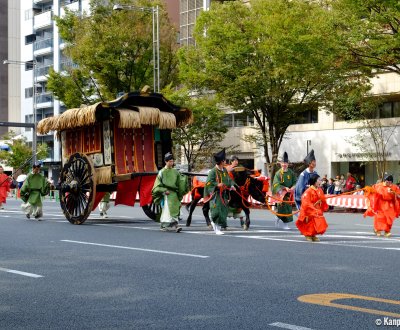History of Japan
Milestones for a Deeper Understanding of the Land of the Rising Sun
Besides a couple of recent dates, most travelers in Japan are not familiar with the country’s history which is at the origins of most of the archipelago’s landmarks. It is also a great source of inspiration for Japan’s soft power, such as manga or video games.
We have put up together a series of articles to better enjoy a trip in Japan, with a deepened knowledge of the various events that took place and the subsequent changes in the country.
Historians have divided Japanese history in periods, on a parallel timeline to Western countries’ history.
Prehistory and protohistory
Prehistory in Japan begins during the Stone Age (Paleolithic) approximately 32,000 years before the current era and includes:
- The Jomon period (between c. 13,000 – 400 BCE);
- The Yayoi period (About 800-400 BCE - 250 CE);
- The Kofun period (between c. 250 to 538 CE).
The 2 last periods are considered part of the protohistory as the population did not have a scripture system, but it was mentioned in the neighboring civilizations texts.
Japanese Antiquity
Japan’s classical age is characterized by the founding of successive capital cities in the Kinai region (an area encompassing nowadays' Kyoto, Osaka and Nara). An emperor is ruling, at least officially, often assisted by a regent, during 3 periods:
- The Asuka period (mid-6th century - 710);
- The Nara period (710 - 784 or 794);
- The Heian period (794 - 1185).
Japanese Middle Age
The Japanese Middle Age, often paralleled with the feudal times in Europe, is dominated by the rule of the shoguns, even if emperors are still officially the supreme authority. Civil wars are also commonplace and help in the emergence of provincial lords, especially in the later periods:
- The Kamakura period (1185 - 1333);
- The Muromachi Period (1336 -1477 or 1573 if including the Sengoku era);
- The Sengoku era (1477 - 1573);
- The Azuchi - Momoyama period (1573 - 1603).
Modern times
The period offered more than 2 centuries of stability, under the Tokugawa shoguns, who established their capital in Edo (Tokyo). Kyoto remained the imperial capital.
- The Edo period (1603 - 1868).
Contemporary times
In the second half of the 19th century, the Imperial Household came back to actual power and moved the capital to Edo, that consequently became Tokyo, to the present days:
- The Meiji Era (1868 - 1912);
- The Taisho Era (1912 - 1926);
- The Showa Era (1926 - 1989);
- The Heisei Era (1989 - 2019); and,
- The current Reiwa era, since 2019.
February 11 is the anniversary date of the founding of Japan and commemorates the construction of the first palace by mythical emperor Jimmu Tennô, considered a descendant of the Sun Goddess Amaterasu, on February 11, 660 BCE.
Japan’s National Day is set to the birthday of the reigning emperor, currently on February 23, Emperor Naruhito’s birth date.

